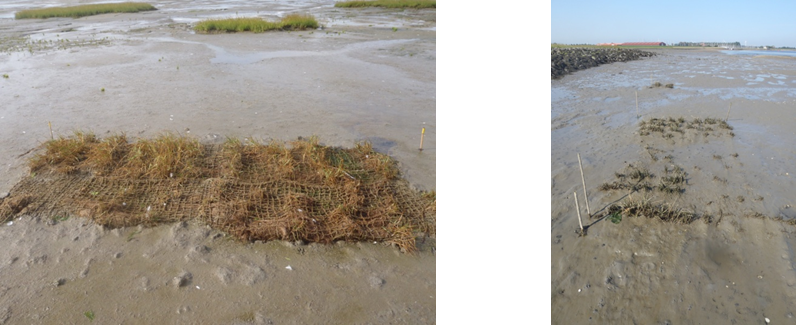Operation and Maintenance
During the operation and maintenance phase of the Building with Nature pilots, the mats and cord grass and their effects on the adjacent intertidal flats were monitored.
Effectiveness of cord grass planting
The growth of Spartina on coconut fibre mats is technically possible. At the time of deployment, however, the condition of the plants was not optimal and a few weeks later sub optimal growth and even some mortality was observed. There are several possible explanations for this.
First, after being pre-grown in a freshwater environment, the Spartina plants suffered from salt stress. A short acclimatization period in brackish water basins did not help.
Second, the Spartina plants experienced heat stress during the installation period, because of the very hot summer weather at the time. This may have influenced the survival of the plants.
Third, after a relatively long pre-growth period in the fresh water, the root system of the Spartina plants was probably too far developed. This, combined with the poor condition of the plants, hampered the formation of new roots after installation on site.

Mats with younger plants grown in salt water are installed earlier in the growing season are likely to have a better chance to succeed. This needs further testing. In October 2012 mats were still present, as well as the plants inside the mats. Several of the loose plants have disappeared. At some sites the mats were covered with a layer of sediment as a result of local hydrodynamics, whereas at other sites the mats are still clearly visible.
